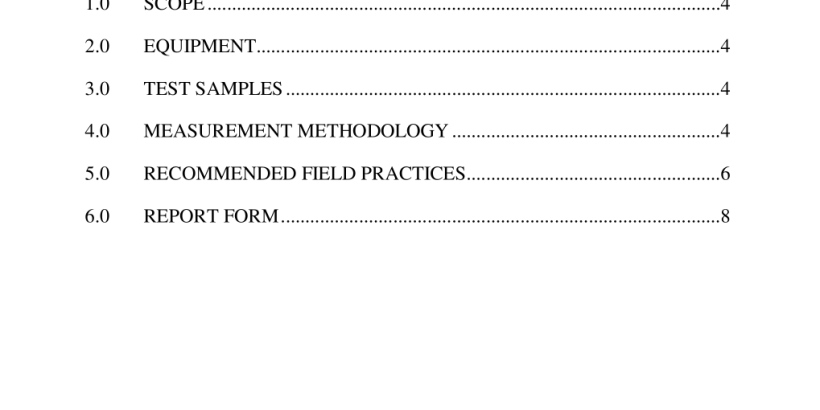ANSI SCTE 61-2018 pdf download.Test Method for Jacket Web Separation
1.0 SCOPE
This document is identical to SCTE 61 2012 except for informative components which may have been updated such as the title page, NOTICE text, headers and footers. No normative changes have been made to this document. The purpose of this test procedure is to provide a test method for measuring the force required to separate webbed or “ figure-eight” coaxial cable constructions. These designs are commonly referred to as messenger, dual, or Siamese cables for the two members that are joined by a web and common overall outer jacket. This procedure is for use in a lab environment to evaluate design and record forces required to remove one member from another. Also included is an industry “best practices” or recommended method for separating the co-joined members in a field application.
2.0 EQUIPMENT
2.1 Utility Knife
2.2 Diagonal Cutters
2.3 Tension Tester (with chart recorder if available)
3.0 TEST SAMPLES
3.1 Preferred length of samples for testing in the tensile tester is 18 in (457 mm) Ten (10) samples shall be evaluated from each reel of product under test. Allow sample to stabilize to laboratory temperature, and record.
4.0 MEASUREMENT METHODOLOGY
4.1 When separating with a tensile tester, the initial cut between the two components shall be approximately 6 in (152 mm). Use a utility knife to separate the two components in the web area being careful not to damage the jacket on either side of the web. The 6 in (152 mm) separation allows enough length to be gripped by the upper and lower fixtures of the tensile tester. The test shall be completed at 70º F ±2 Fº (21º C ±1 Cº) or 70 ±2 º F (21 ±1 º C).
4.1.1 Follow tensile tester manufacturer’s specification for calibration and warm up prior to testing the samples. Fixtures shall be separated at a rate of five centimeters (two-inches) per minute. A load range suitable for the material under test shall be used, i.e. 20 lbf (89 N) for Polyvinyl chloride (PVC) and for Polyethylene (PE) drop style products. Place sample in the tensile tester to obtain separation due to shear. (See Figure 1) Utilize a chart recorder if available, prior to starting crosshead separation. An initial peak load will be observed at start up,but shall not be considered as the maximum load for separation. Once the peak load has subsided, a nominal load of some lower value will be observed. (See Figure 2) This value shall be recorded as the force required for separation of the two members.
5.0 RECOMMENDED FIELD PRACTICES
When separating co-joined members, i.e. messengered, dual or Siamese type cables in the field, it is recommended that the separation be performed using a shearing method as opposed to a tearing action. (See Figure 3) Start the separation with a knife or diagonal cutters. The shear method will help to prevent jacket splitting and tearing on either side of the web.
5.1 Inspect along the cable length from where it was initially separated up to where separation was stopped. Any sign of cracks or splits on either side of the web will be considered a failure.ANSI SCTE 61-2018 pdf download
